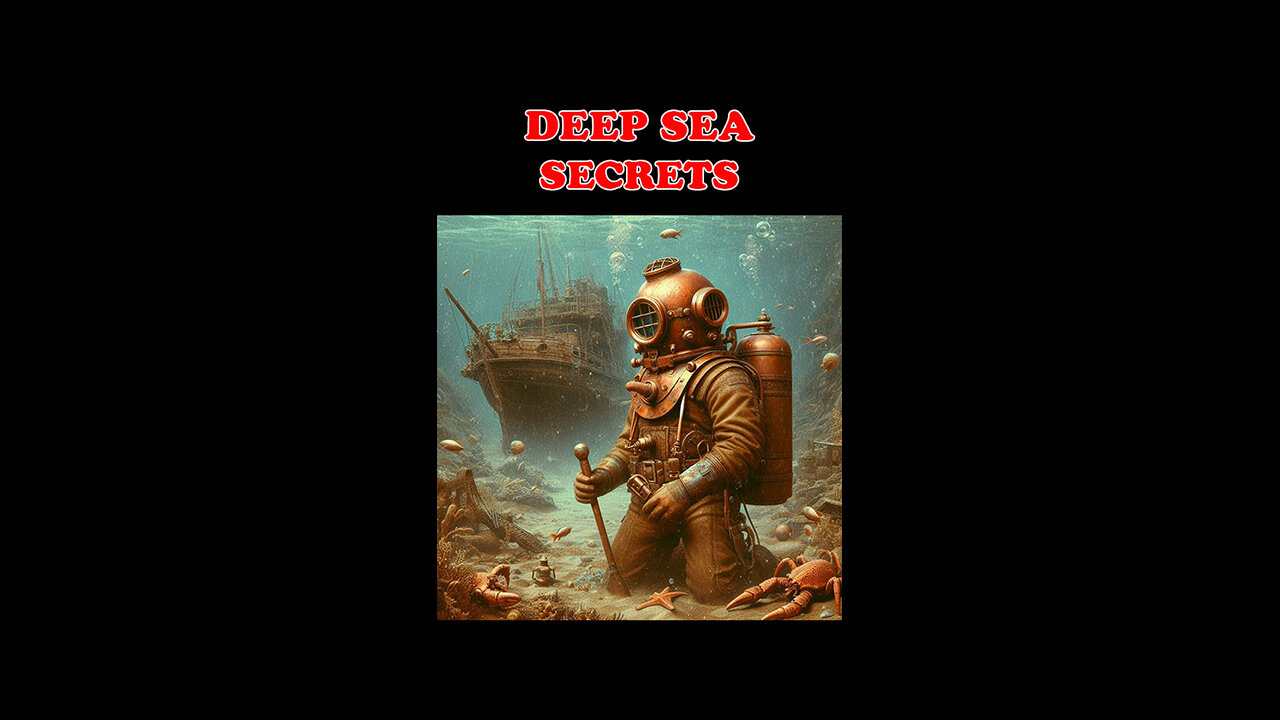Premium Only Content

What Mysteries Does Deep-Sea Tech Reveal?
There are some fascinating deep sea technology available to divers today. Further down are just some of them.
Grab a FREE Sahara Desert ebook HERE: https://bit.ly/3PePvYU
If you enjoy it, a sub would be awesome!
VISIT US AT: https://panther-ebooks.com/ for superb ebook stories from world renowned authors and other upcoming authors.
WHAT MYSTERIES DOES DEEP SEA TECHNOLOGY REVEAL?
For centuries, deep-sea diving has captured imaginations, drawing us into the vast, dark unknown beneath the waves. It’s a journey that begins in ancient times, with divers holding their breath to salvage treasures or explore shipwrecks, but advances over the past few hundred years have transformed the ocean’s abyss into a realm we can investigate, and in many ways, still puzzle over.
In the early days of deep-sea exploration, technology was limited to crude diving bells that trapped small pockets of air, giving divers only minutes to stay underwater. It wasn’t until the early 19th century that diving suits, equipped with hoses pumping surface air, allowed divers to explore further. But even these advances were risky, with divers suffering from nitrogen narcosis and the dreaded bends. These diving suits were both breakthroughs and symbols of our limitations in the face of oceanic pressure.
The mid-20th century marked a turning point with the invention of SCUBA (Self-Contained Underwater Breathing Apparatus) gear, thanks to pioneers like Jacques Cousteau. This equipment freed divers from the surface, enabling them to descend to hundreds of feet below sea level. But as technology opened the doors to deeper exploration, it also revealed the mysteries of the deep. Explorers encountered strange and uncharted ecosystems, unusual geological formations, and unexplained phenomena, such as bioluminescent creatures illuminating the pitch-black waters like stars in the night sky.
The technology developed for military use has also played a significant role in pushing the boundaries of deep-sea exploration. Submarines equipped with sonar and advanced mapping tools provided insights into the ocean floor’s contours. Yet, certain areas, like the Mariana Trench, the deepest known part of the ocean, still pose challenges due to immense pressures that few manned vessels can withstand. Only a select few, like the famous descent by filmmaker James Cameron in 2012, have ventured into these realms. The submersibles used, designed to endure the crushing pressure of the ocean’s depths, remain marvels of human engineering but are still limited by technology’s reach.
Today’s advances focus on autonomous, remotely operated vehicles (ROVs) and drones, which allow scientists to study even deeper sections of the ocean without risking human lives. These ROVs have mapped vast portions of the ocean floor and discovered hydrothermal vents spewing mineral-rich waters that support unique forms of life. But while this technology reveals more than ever before, the ocean’s true extent remains shrouded in darkness. Only about 20% of the ocean floor has been mapped to high resolution, leaving plenty of room for speculation.
Deep-sea explorers often report seeing inexplicable lights, unidentified creatures, or structures that some speculate might hint at geological or even extraterrestrial anomalies. One of the most famous mysteries is the so-called “Bloop,” an underwater sound recorded in the 1990s, thought to be one of the loudest underwater noises ever captured. Its origin is still debated, some think it might be biological, while others suspect geological activity. Yet without the technology to fully investigate, many of these underwater mysteries remain speculative.
So, while modern technology has peeled back some of the ocean’s mysteries, deep-sea exploration is still in its infancy. We’re only beginning to understand what lies below, and the potential discoveries, both scientific and speculative, may one day rewrite our understanding of life on Earth and, possibly, beyond. The secrets of deep-sea diving, in many ways, reflect the secrets of the ocean itself: deep, dark, and perhaps, unknowable.
-
 LIVE
LIVE
Matt Kohrs
9 hours agoCPI Inflation Report, Powell Testifies & Degen Trading || The MK Show
1,691 watching -
 LIVE
LIVE
Wendy Bell Radio
6 hours agoFREE AT LAST
13,553 watching -
 46:00
46:00
BonginoReport
4 hours agoThe Insidious Agenda Behind Pope Francis's Attack on Trump (Ep.138) - 02/12/2025
69.5K159 -
 1:24:22
1:24:22
Graham Allen
3 hours agoEXPOSED! JFK, 9/11, And Epstein Files WILL BE RELEASED! + FEMA Inspector General FIRED!
38.1K15 -
![REP LUNA SAYS THERE WAS A SECOND JFK SHOOTER [EP 4438-8AM]](https://1a-1791.com/video/fwe1/67/s8/1/z/2/f/M/z2fMx.0kob-small-REP-LUNA-SAYS-THERE-WAS-A-S.jpg) LIVE
LIVE
The Pete Santilli Show
17 hours agoREP LUNA SAYS THERE WAS A SECOND JFK SHOOTER [EP 4438-8AM]
1,305 watching -
 1:32:21
1:32:21
Jeff Ahern
2 hours ago $2.24 earnedNever Woke Wednesday with Jeff Ahern
25.8K1 -
 LIVE
LIVE
Vigilant News Network
19 hours agoTrump Admin Strikes Back at Deep State Operatives | The Daily Dose
1,093 watching -
 1:27:30
1:27:30
Game On!
16 hours ago $2.11 earnedSuper Bowl champion Kellen Moore signs with the Saints!
29.2K1 -
 20:41
20:41
Producer Michael
20 hours agoMEET THE MAN WHO BUYS THE WORLDS MOST EXPENSIVE DIAMONDS
53.4K9 -
 14:19
14:19
Cooking with Gruel
17 hours agoBaking Soda and Beef
57.6K9